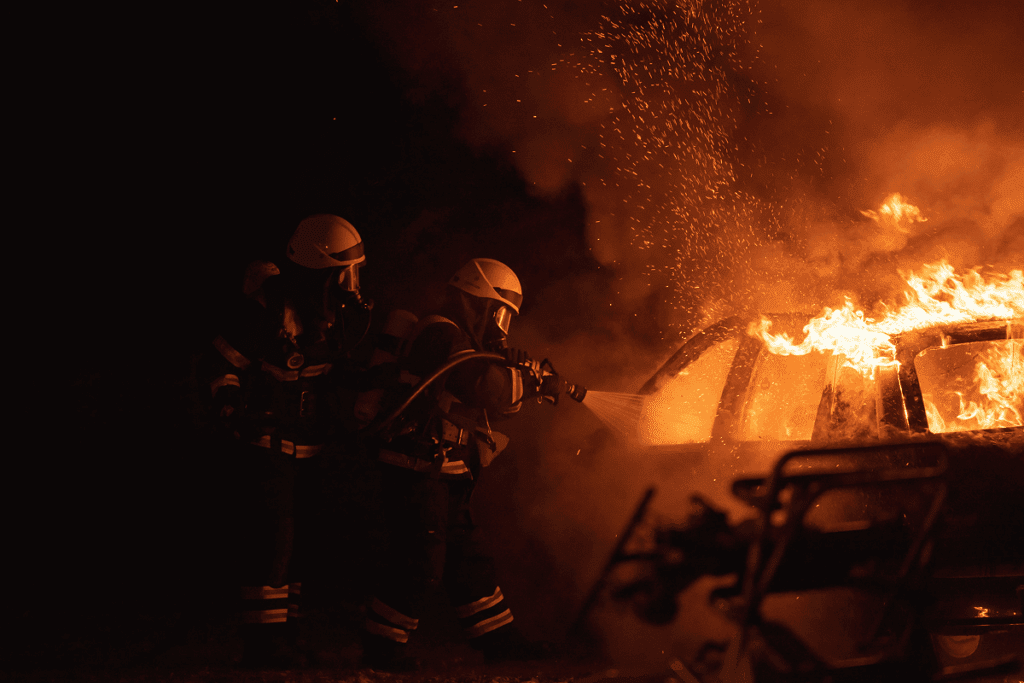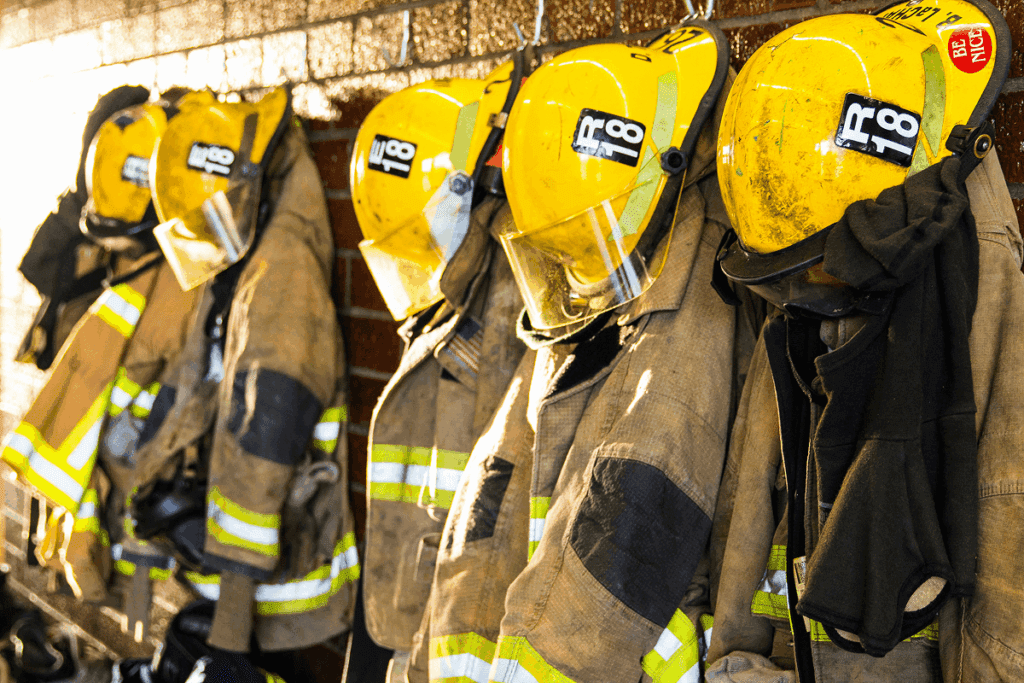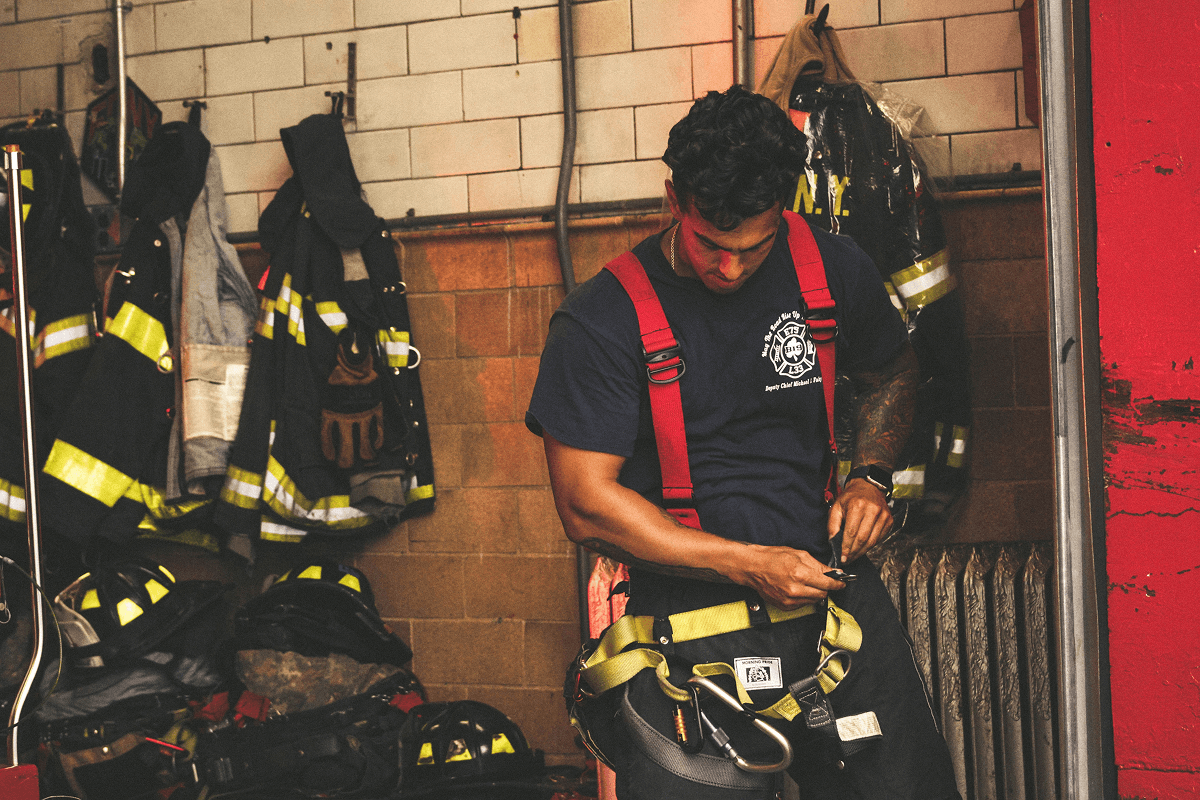Have you ever wondered how to become a volunteer firefighter? And dreamed of being the hero who saves lives during a crisis? That’s exactly what volunteer firefighters do every day. These dedicated heroes rush into burning buildings, provide emergency medical care, and protect their communities—all without expecting a paycheck. Driven by a passion for service, they make a huge difference in towns and cities across the country.
Despite challenges like declining volunteer numbers, your role as a volunteer firefighter is more vital than ever to keep communities safe. This guide is your roadmap to becoming a volunteer firefighter, packed with steps, skills, and resources to help you get started. Whether you’re just curious or ready to dive in, we’ve got you covered with practical advice to serve your community with courage and dedication.
- 1. Why Become a Volunteer Firefighter?
- 2. Requirements to Become a Volunteer Firefighter
- 3. 7 Steps to Become a Volunteer Firefighter
- 4. Skills Needed for Volunteer Firefighting
- 5. Resources for Aspiring Volunteer Firefighters
- 6. Balancing Volunteer Firefighting with Your Career
- 7. Benefits of Being a Volunteer Firefighter
- 8. Conclusion on How to Become a Volunteer Firefighter
Why Become a Volunteer Firefighter?
Volunteering as a firefighter is more than just fighting fires—it’s about being there for your neighbors when they need you most. Here are some compelling reasons to consider this role:
- Community Impact: Volunteer firefighters provide critical emergency services, ensuring safety and support during crises. They respond to calls that range from house fires to medical emergencies, making a tangible difference in their communities.
- Skill Development: Volunteers gain valuable skills, including firefighting techniques, emergency medical care, teamwork, and leadership, which are transferable to other areas of life.
- Personal Fulfillment: The act of helping others in distress offers a profound sense of purpose and pride. Many volunteers find the role deeply rewarding.
- Career Pathway: For those interested in a firefighting career, volunteering serves as practical experience and a stepping stone to paid positions, such as fire investigators or paramedics.
- Camaraderie: Joining a fire department means becoming part of a tight-knit team, fostering lifelong friendships and a sense of belonging.
According to the National Volunteer Fire Council, approximately 67% of firefighters in the United States are volunteers, representing about 682,600 individuals who save communities an estimated $46.9 billion annually through their service. These statistics underscore the vital role volunteers play in the fire service industry.
Requirements to Become a Volunteer Firefighter
To become a volunteer firefighter, candidates must meet and be eligible for certain requirements, which can vary by fire department but typically include the following:
- Age: Most departments require volunteers to be at least 18 years old. Some offer junior firefighter programs for individuals as young as 14, providing early exposure to the field.
- Education: A high school diploma or GED is generally required, ensuring candidates have basic literacy and problem-solving skills.
- Background Check: A clean criminal record is essential, as firefighters are trusted to uphold public safety and handle sensitive situations.
- Driver’s License: A valid driver’s license is often necessary, with some departments requiring a specific class for operating emergency vehicles.
- Physical Fitness: Firefighting is physically demanding, requiring strength, endurance, and agility. Candidates must be in good health to be able to work and perform tasks like carrying heavy equipment or climbing ladders.
- Residency: Many departments require volunteers to live within a certain distance of the fire station to ensure quick response times during emergencies.
- Medical Clearance: Some departments mandate a medical evaluation to confirm that candidates can handle the physical and emotional stress of the fire rescue job.
Requirements and benefits can vary by state. For example, South Carolina offers tax credits up to $3,000, while Florida requires specific training courses (Florida Volunteer Firefighter). Check with your local fire department to confirm their rules.

7 Steps to Become a Volunteer Firefighter
The journey to becoming a volunteer firefighter involves several clear steps. Below, we outline seven key steps to guide you through the process, ensuring you’re well-prepared to join your local fire department.
1. Think About the Commitment
Before applying, reflect on the time and effort required to become a volunteer firefighter. This role demands significant dedication, as volunteers must be available to respond to emergency calls at any time, often at a moment’s notice. The physical and emotional demands are substantial, requiring you to maintain fitness and manage stress effectively. Additionally, training and ongoing drills add to the time commitment, which can range from 300-400 hours in the first year.
Balancing these responsibilities with a career and family life can be challenging. To manage this, explore strategies for maintaining work-life balance. If you’re passionate about making a difference in your community and ready to take on the challenges ahead, this step is your confirmation to move forward with confidence!
2. Contact Your Local Fire Department
The next step is to reach out to your local fire department to express your interest in volunteering. Use the department’s non-emergency number or visit their website to find contact information for the volunteer coordinator or fire chief. You can also stop by the fire station or their office to inquire in person, which may offer a chance to tour the facility and meet current firefighters.
Prepare questions to ask, such as:
- Are there current openings for volunteer firefighters?
- What are the minimum requirements?
- What does the application process involve?
- How many hours per week are typically required?
- Are there residency restrictions?
Build and establish relationships with department staff, as knowing how to network with people can help you make a positive impression.
3. Fulfill the Minimum Requirements
Ensure you meet the basic requirements outlined by your fire department. Common criteria include being at least 18, holding a high school diploma or GED, passing a background check, and possessing a valid driver’s license. Some departments may have additional prerequisites, such as completing a basic first aid course or obtaining specific certifications.
If you don’t meet all requirements, take steps to address them. For example, if a department requires a certain level of physical fitness, begin a training regimen to prepare for the physical exam. Verifying eligibility early helps streamline the application process.
4. Complete the Application Process
Once you’ve confirmed your eligibility, submit an employment application to the fire department. This typically involves filling out a form and providing legal documentation, such as identification, proof of education, and a driver’s license. Some departments may request a resume or references to assess your background and commitment.
The application process is your opportunity to demonstrate your enthusiasm and suitability for the role. Be thorough and accurate in your submission, as incomplete or incorrect documentation can delay your progress. If you face rejection at this stage, don’t be discouraged—persistence is key.
5. Pass the Screening Process
The screening process evaluates your ability to serve as a volunteer firefighter and typically includes several components:
- Background Check: Verifies your criminal history and driving record to ensure you meet the department’s standards.
- Physical Exam: Assesses your physical fitness through tests like the Candidate Physical Ability Test (CPAT), which simulates firefighting tasks such as stair climbing, hose dragging, and ladder raising. According to Public Safety Testing, the CPAT is a standard requirement for many departments.
- Medical Evaluation: Confirms you’re in good health and free from conditions that could impair your performance. This may include a respirator fit test, as firefighters often wear protective gear.
- Interview: Gauges your motivation, teamwork skills, and ability to handle stress. Common questions include “Why do you want to be a volunteer firefighter?” and “How do you stay physically fit?”
Passing the screening process demonstrates that you’re physically and mentally capable of the role. Prepare by maintaining a healthy lifestyle and practicing interview responses to boost your confidence.
6. Complete Training
Fire training is a critical step to become a volunteer firefighter, equipping you with the skills needed to respond to emergencies safely and effectively. Most departments provide training at no cost, covering both classroom instruction and hands-on practice. Key training components include:
- Firefighter I Certification: Based on the NFPA 1001 standard, this certification teaches foundational firefighting skills, such as fire behavior, safety, personal protective equipment, and basic rescue operations. Training typically takes 3-6 months, depending on whether it’s full-time or part-time.
- Emergency Medical Technician (EMT) Training: Many departments require or prefer volunteers to be certified EMTs, as firefighters often handle medical emergencies. EMT training covers basic life-saving skills like CPR, treating smoke inhalation, and managing trauma, and takes a few hundred hours to complete.
- Additional Certifications: Some departments require hazardous materials awareness, CPR, or wildland fire control training. These vary by state and department.
Training is intensive but designed to be flexible, often scheduled on nights and weekends to accommodate volunteers’ schedules. You’ll also participate in ongoing drills to maintain your skills and stay prepared for calls.
7. Pursue Further Education (Optional)
While not mandatory, pursuing further education can enhance your skills and open doors to advanced roles in the fire service. Consider a degree in fire science, which covers topics like fire prevention, emergency management, and leadership. Such education can prepare you for positions like a fire investigator or a paramedic.
Additionally, advanced certifications, such as Firefighter II, build on Firefighter I skills, focusing on structural fire control, vehicle extrication, and life safety initiatives. These credentials demonstrate your commitment to professional growth and can improve your prospects for a firefighting career.
Skills Needed for Volunteer Firefighting
Volunteer firefighters require a diverse skill set to perform their duties effectively. These skills are developed through training and practical experience, ensuring you’re prepared for the challenges of emergency response. Key skills include:
- Physical Fitness: Firefighting tasks, such as carrying heavy hoses or rescuing individuals, demand strength, endurance, and agility. Regular exercise and a healthy lifestyle are essential to meet these physical requirements.
- Emotional Resilience: Responding to emergencies, including fires and medical incidents, requires the ability to stay calm and focused under pressure. Emotional stability helps you manage stress and make sound decisions.
- Teamwork: Firefighters work as a cohesive unit, relying on each other to execute response plans safely. Effective collaboration is critical in high-stakes situations.
- Communication: Clear and concise communication is vital, especially when coordinating with team members or providing aid to victims. You’ll need to convey information quickly and accurately.
- Technical Skills: Proficiency in using firefighting equipment, such as hoses and ladders, and administering first aid is necessary. Training programs teach these skills, covering fire suppression, hazmat awareness, and building layouts.
Volunteer firefighters may also develop leadership skills over time, taking on responsibilities like mentoring new recruits or coordinating community outreach. These skills not only enhance your effectiveness as a firefighter but also benefit other areas of your life.
Mental Health and Support
Firefighting can be tough on your mental health, as you may face traumatic situations like severe injuries or loss. It’s okay to need support. Prioritizing your well-being is a sign of strength. Many departments and organizations offer resources to help. For example, the NVFC’s Share the Load program provides counseling and support for firefighters. Don’t hesitate to reach out if you’re struggling, and ensure that you stay healthy for yourself and your community.

Resources for Aspiring Volunteer Firefighters
Several resources can support your journey to becoming a volunteer firefighter, offering guidance, training, and opportunities to connect with the fire service community:
- National Volunteer Fire Council (NVFC): The NVFC is a leading nonprofit advocating for volunteer firefighters, providing free training, resources, and scholarships. Their website offers tools like the Junior Firefighter Program for younger individuals.
- Make Me a Firefighter: This NVFC campaign helps aspiring volunteers find opportunities and learn about the process. Visit Make Me a Firefighter to explore openings and FAQs.
- Local Fire Department Websites: Most fire departments list volunteer requirements and application details on their websites. Check your local department for specific information.
- Certified Training Centers: Look for state-accredited programs offering Firefighter I and EMT training. These centers, often affiliated with community colleges or fire academies, provide comprehensive education.
- Online Platforms: Websites like Public Service Degrees offer step-by-step guides and insights into volunteer firefighting.
These resources can help you navigate the process, from initial inquiry to certification, ensuring you’re well-equipped to serve.
Balancing Volunteer Firefighting with Your Career
Volunteer firefighting requires significant time commitments, which can be challenging to balance with a full-time job and personal responsibilities. Emergency calls can occur at any time, and training sessions often take place on evenings or weekends. Here are strategies to manage these demands:
- Communicate with Your Employer: Inform your employer about your volunteer role and discuss how to handle calls during work hours. Some employers offer flexibility for community service commitments.
- Prioritize Time Management: Use scheduling tools to organize your time, ensuring you can attend training and respond to calls without neglecting other responsibilities.
- Seek Family Support: Ensure your family understands your commitment and can provide support, such as covering household duties during calls.
- Maintain Well-Being: Prioritize physical and mental health to handle the demands of firefighting and your career. Regular exercise, adequate rest, and stress management techniques are crucial.
By implementing these strategies, you can serve as a volunteer firefighter while maintaining a fulfilling career and personal life. For additional insights, explore careers for work-life balance to understand how volunteering can complement your professional goals.
Benefits of Being a Volunteer Firefighter
Beyond personal fulfillment, volunteer firefighters may enjoy tangible benefits, which vary by department and state. These can include:
- Financial Incentives: Some departments offer stipends per call, tax breaks, or tuition reimbursement.
- Training and Gear: Most departments provide free training and equipment, reducing out-of-pocket costs.
- Community Recognition: Volunteers are often celebrated for their service, fostering a sense of pride and belonging.
- Health and Wellness Programs: Some departments offer access to fitness programs or mental health resources to support volunteers’ well-being.
These benefits enhance the volunteer experience, making it a rewarding investment of time and effort.
Compensation for Volunteer Firefighters
While volunteer firefighters do not receive a salary or hourly wage, many departments offer small forms of compensation to recognize their service. These can include:
- Per-Call Payments: A small fee, often $2 to $25, for each emergency call you respond to.
- Stipends: Monthly or yearly payments, such as $50/month or up to $4,000/year in some areas.
- Training Stipends: Payments for completing courses, like $500-$1,250 in New York State.
- Other Benefits: Tax credits (e.g., up to $3,000 in South Carolina), expense reimbursements, or pension plans, depending on your state.
Note on Compensation
Compensation for volunteer firefighters varies significantly by department and location. Some volunteers receive no financial reward, serving purely for community benefit, while others get small payments or benefits. The table below outlines typical compensation structures, but actual amounts depend on local policies.
Typical Compensation for Volunteer Firefighters
| Type of Compensation | Description | Typical Amount |
|---|---|---|
| Per-Call Payment | Payment for each emergency call responded to | $2 – $25 per call |
| Monthly Stipend | Regular monthly payment | Varies, e.g., $50/month |
| Annual Stipend | Yearly payment | Varies, e.g., $4,000/year |
| Training Stipends | Payment for completing training courses | $500 – $1,250 in NY State |
| Other Benefits | Tax credits, reimbursements, pensions | Varies by state and department |
Conclusion on How to Become a Volunteer Firefighter
Becoming a volunteer firefighter is a noble pursuit that allows you to serve your community, develop valuable skills, and make a lasting impact. By following the steps outlined—considering the commitment, contacting your fire department, meeting requirements, completing training, and balancing responsibilities—you can successfully join the ranks of these dedicated professionals. Resources like the National Volunteer Fire Council and Make Me a Firefighter provide invaluable support to guide you along the way.
If you’re ready to take on this challenge, reach out to your local fire department today. Your effort and dedication can help keep your community safe, one call at a time.

Hlib, Editor-in-Chief at Made for Lives, writes in-depth guides on jobs, careers, and work-life balance to help readers thrive professionally.

